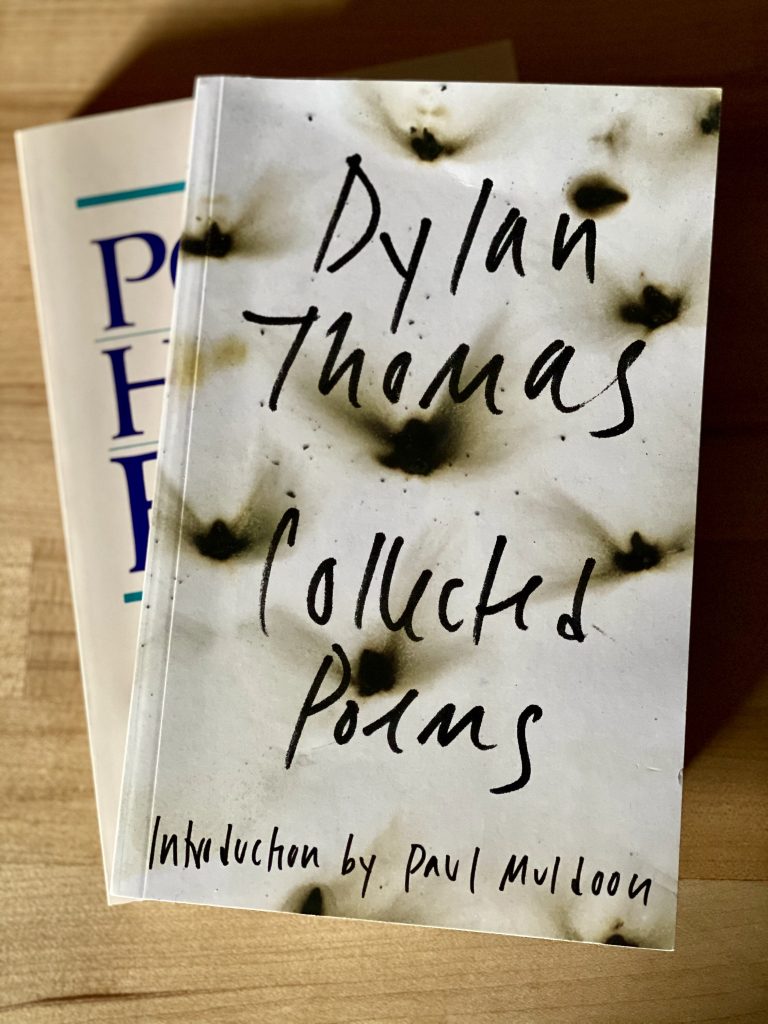
The last time I read poetry was in high school. The lessons were dry and focused on the mechanics of the poem. I only remember one piece, Woodstock by Joanie Mitchell (and only because it the famous CSN&Y song). And that was my total interaction with poetry.
Fast forward to now, Creating Short Fiction includes an entire section on writing lyrically. Knight, the author, recommends understanding poetry to improve the quality of prose. At his suggestion, I read The Poets Handbook. It didn’t resonate. The only nugget I pulled out was a better understanding of the rhythm or cadence of a phrase. Like iambic pentameter, with the words building up then down.
I read about Bob Dylan and his admiration of Dylan Thomas. I knew of Thomas, but wasn’t familiar with his work. Or so I thought; his most famous piece is “Do Not Go Gently Into That Good Night”. This poem captures me. And I finally see how structure, meter, repetition, and carefully chosen words work together to create such a powerful piece.
From Dylan Thomas, Collected Poems:
“Do not go gentle into that good night,
Old age should burn and rave at close of day;
Rage, rage against the dying of the light.
Though wise men at their end know dark is right,
Because their words had forked no lightning they
Do not go gentle into that good night.
Good men, the last wave by, crying how bright
Their frail deeds might have danced in a green bay,
Rage, rage against the dying of the light.
Wild men who caught and sang the sun in flight,
And learn, too late, they grieved it on its way,
Do not go gentle into that good night.
Grave men, near death, who see with blinding sight
Blind eyes could blaze like meteors and be gay,
Rage, rage against the dying of the light.
And you, my father, there on the sad height,
Curse, bless, me now with your fierce tears, I pray.
Do not go gentle into that good night.
Rage, rage against the dying of the light.”
Beautiful, haunting. The repetition and usage of “Do not go gentle into that good night. /Rage, rage against the dying of the light.” lends the piece so much power, so much force. There are only 19 lines, and Thomas uses these two lines 8 times. This is a villanelle which requires the repetition of two lines throughout the piece. Their meaning changes through the poem, starting philosophically and ending literally.
This is a nice poem to read, but it should be heard. Poetry is meant to be listened to out loud. Check it out here. Stunning.
Thomas wrote this poem for his father as he was dying; it was not a hypothetical exercise. The emotion seeps out of every line.
